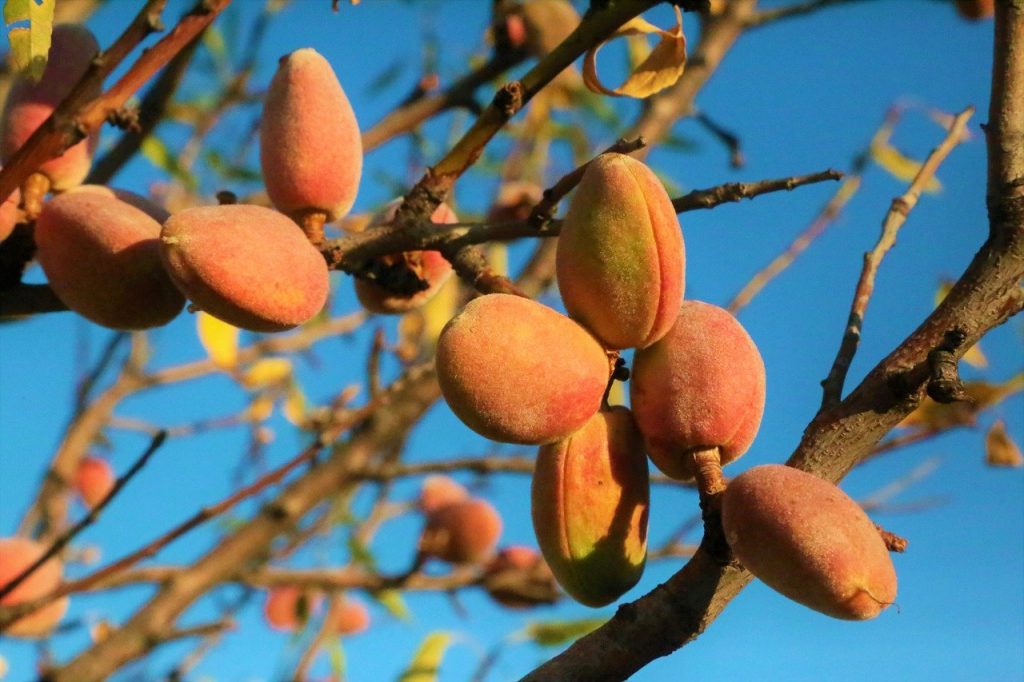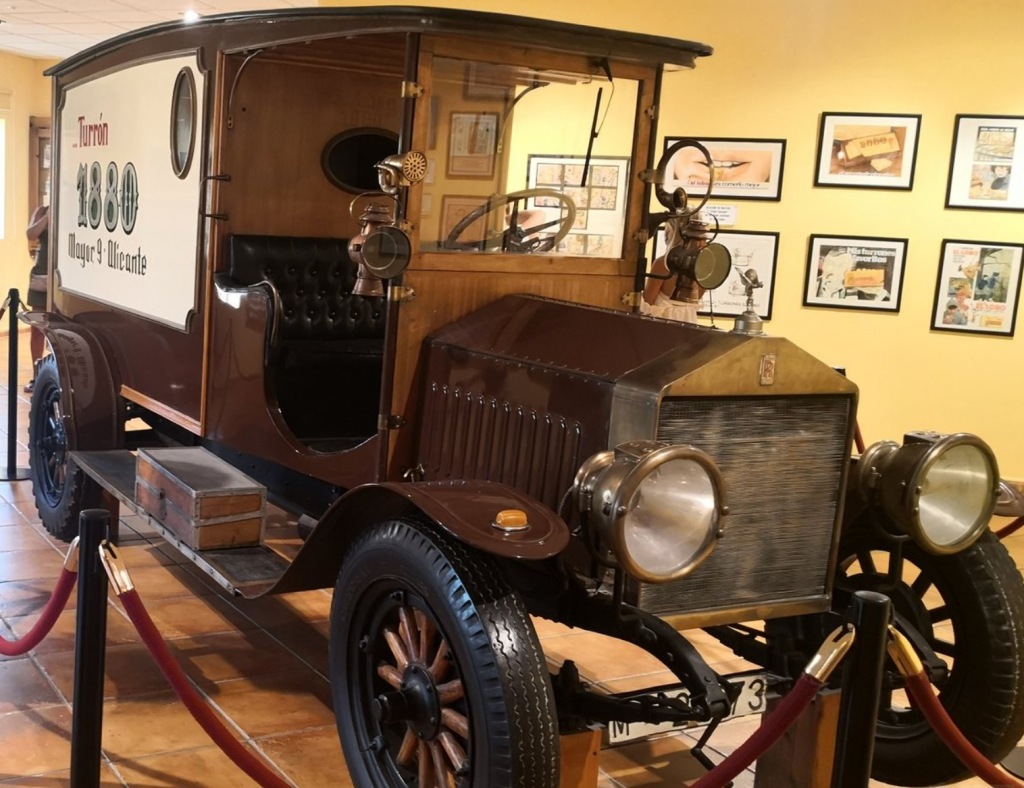
Turrón from Alicante, the Iconic Confectionary, known the world over is a deliciously sweet nougat, popular year round but even more so at Christmas time. Most Spaniards would not contemplate a Christmas without turrón. Turrón is also eaten in France, Italy and all over Latin America but it’s the turrón from the Alicante region that is so famous. In this post, we ask “what is turrón”, we take a peek at it’s history and as we do this we will grow to understand why turrón from Alicante is the must-have sweet treat for Spaniards everywhere. And, importantly, we’ll also tell you where you can buy this confection which is “rico y deliciosa” when you visit Alicante city.

What is Turrón?
Turrón is a very sweet nougat made with honey, sugar, egg whites and toasted almonds. It is usually shaped into a flat rectangular tablet.
There are three main types of turrón: turrón de yema (made with egg yolks), turrón de Alicante (hard and crunchy with whole pieces of almond) also known as Duro (which means hard), and turrón de Jijona or Xixona (a soft, chewy variety made with ground almonds). Although, more recently, manufacturers are experimenting with tastes to make all kinds of flavours such as praline, whisky or chocolate to name just a few.

History of Turrón
The name turrón probably comes from the Latin torrere (to toast) but the origins of turrón date back to the time when the moors from Arabia ruled most of Spain. The Moors enjoyed a robust diet of herbs, fruits, spices, meat and fish and were responsible for bringing so much to Spanish cuisine as we know it today. Among other things, the Moors introduced sugar cane and almonds to Spain along with the technique of using ground almonds to make a marzipan like paste which was the origin of turrón.
Jijona
Jijona, or Xixona, as it’s known in Valenciana, is a small town about 25 miles from Alicante. You can see it from the top of The Santa Barbara castle in Alicante. The main economic activity for the past few hundred years, at least, is the production of turrón.
Ingredients are very important in the turrón making process. Marcona almonds are the best type of almond to use for making turrón. The Marcona almond is slightly rounder and sweeter than other almonds, although the shell is harder. The Marcona almond has been grown in Spain for a very long time.

The wildflowers and blossom that grow in and around the mountainsides of Jijona allow for a very delicate delicious honey to be produced. The combination of the abundant almond orchards along with the local honey, make Jijona the perfect place to create this iconic sweet treat.
With a worldwide market value of around €450 million, it’s easy to see why turrón is taken seriously here. There are in excess of 20 companies making the artisan confectionary in this small Alicante town. Some only very boutique and artisanal and others more established.
Almendra y Miel is one of the oldest and biggest turrón manufacturers in Jijona, dating back nearly 300 years and going back through many generations of the same family. It is here that you can watch the real time production of turrón taking place and even, if you are lucky, taste the end product. Afterwards, you should visit the Museum of turrón (address below) to find out more about the history of the product within Jijona.

Buying Turrón
Turrón is a great gift to buy for someone when you are visiting Alicante. When you go shopping for turrón, you will see widely differing prices for different varieties, as with most things, brands do play a part, el lobo and 1880 (one of the most expensive brands of turrón) are two of the best known brands from the Almendra y Miel family and have been around for years.


The most important factor in the quality of the turrón is the percentage of almonds contained within. You might be surprised to know that there is a set of recognised standards and controls that govern how turrón can be labelled and sold. To be labelled as a ‘suprema’ and sold with a Denomenacion de Origen’ stamp, a turrón must contain at least 60% almond for the hard Alicante and 64% for the softer Jijona. It is important to look for ‘suprema’ on the packaging because other, cheaper ,versions are often confusingly labelled as ‘Calidad Extra’ (extra quality) which doesn’t actually mean anything.
Some companies will also have the ‘Sublime’ version or the ‘Oro’ (Gold) version which goes above and beyond the required standards and can contain around 70% of Marcona almonds. This, of course, will also mean that you pay more for your turrón.
There are several shops in Alicante city selling turrón and it’s not hard to find them. There are also a couple of family run turrón kiosks outside the central market. However, if you take part in one of the free walking tours of Alicante you will probably end up in Turrones Espi (https://turronesespi.com), which is one of the best shops in Alicante for turron which has been established since 1890. If you do happen to visit as part of a walk you will probably also get free samples and maybe a taste of turrón liqueur, which is delicious.

More Info:
MUSEO DEL TURRÓN
+34 965 610 712
info@museodelturron.com
Polígono Industrial Ciudad del Turrón – Pol. Espartal II
Carretera Busot km1. 03100
Xixona – Alicante
http://museodelturron.com/





